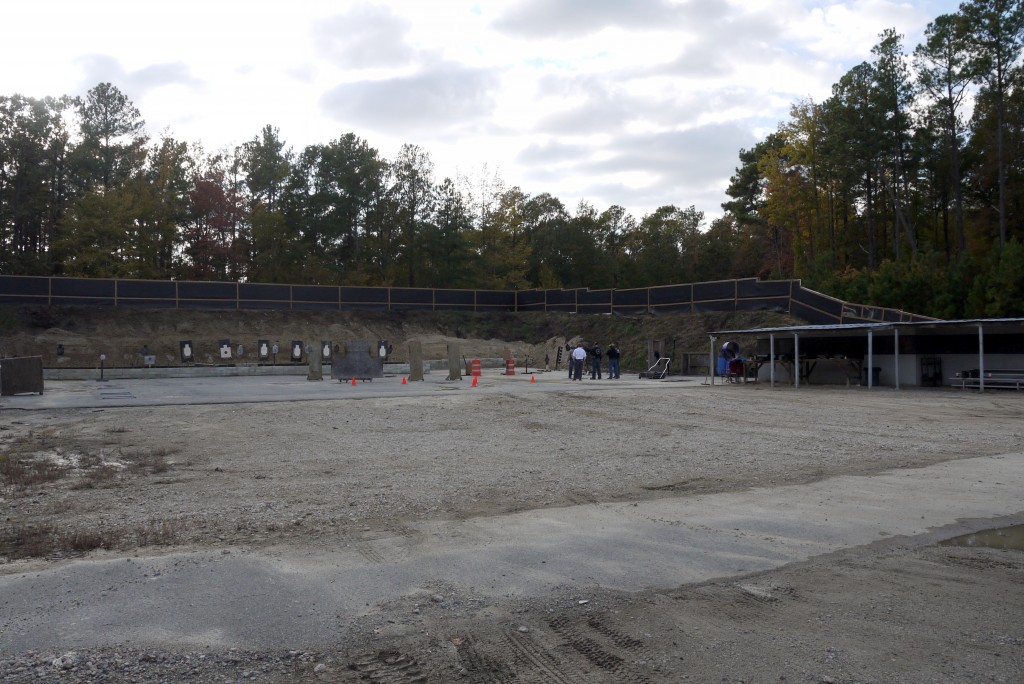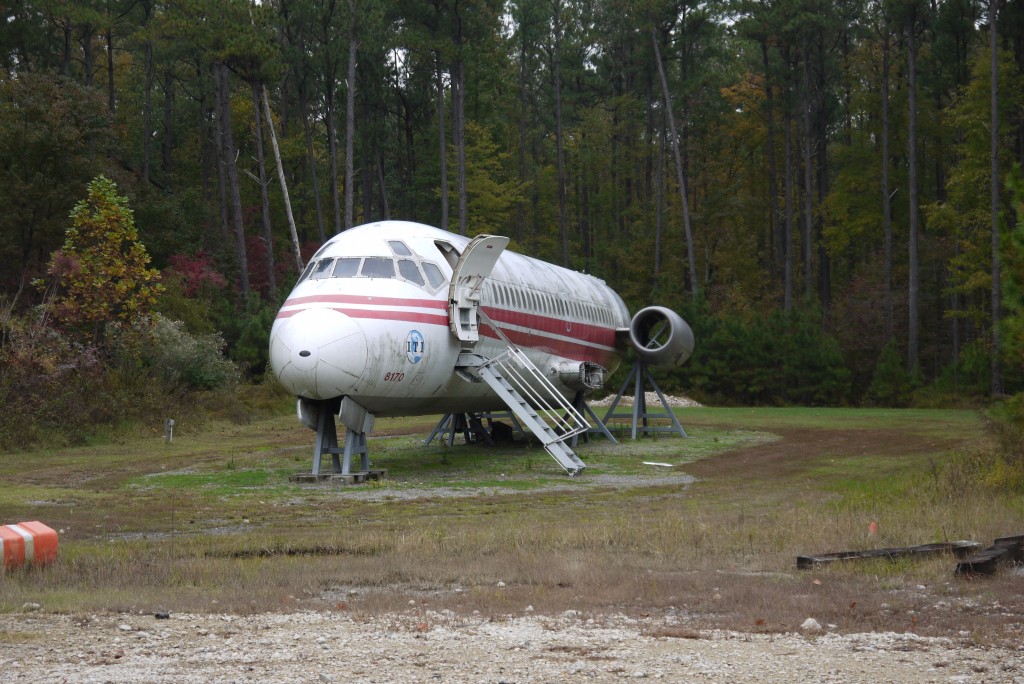3-Gun is my chosen competition style, requiring the use of a rifle, a pistol and a shotgun at some point during the day. It challenges every aspect of your shooting abilities and if any one of those is deficient then your score will suffer. Pistol shooting has always been my weak spot, so when I was offered the opportunity to take a pistol course designed around competition shooting I jumped at the opportunity.
http://www.youtube.com/watch?v=PddnhUQi7Ck
International Training Inc. is a company that primarily exists to train military and private security forces in firearms handling, driving, and other techniques related to “tactical” situations, which makes it a little curious that such a company would be interested in competition shooting. That is, until you realize that their teaching staff formed their own competition shooting team and the person teaching the class competes against the best IDPA and USPSA shooters in the world. Competition shooting encourages quick and accurate fire, and the experience gained from the competition world is often directly applicable to the battlefield. That’s the reason the Army, Marine Corps and the Air Force all have marksmanship teams that compete in various shooting sports.
The facilities available at the Virginia campus for ITI are simply astounding. They’ve colonized the majority of the local regional airport, turning the runways into driving courses and the surrounding woodlands into shooting ranges, complete with a parked commercial airplane showing the distinct signs of having been used for simunition training in the recent past. While we were confined to a single 50 yard small arms range we could see and hear evidence of training going on at the other ranges on the site using much more interesting (and fast firing) firearms. The range we were on was well kept with tons of steel targets and very nice target holders, as well as ample bench space to load magazines under a tin roof.

Speaking of that 50 yard range I do have one minor complaint: the ground is asphalt. While that might seem like an improvement over the jagged gravel typical of firing ranges asphalt has a nasty habit of scuffing up the buttpads on your magazines after you’ve dropped them a couple times. My magazines used to be nice and smooth but now they look like a dog had at them for a while. They still function, but they’re not as pretty as they used to be. Just FYI.
http://www.youtube.com/watch?v=srA75emCrDQ
The course itself is based on teaching you the “set pieces” of a competition and then defining metrics you can use to better your time. To that end the instructor provided a binder at the beginning of the class filled with worksheets on which we were to record our times for the various exercises and a flash drive with digital versions so we could print out more copies. The idea is to track your progress and to figure out how long it takes you to do something so you can use it in competitions — for example, if an activator takes 2 full seconds to show the target do I have time to double tap the paper targets behind it before it appears? Other topics included:
- Three trigger pulls (slap, pull through, prep)
- Target transitions
- Sighted vs. Unsighted shooting
- Shooting on the move
- Props and activators
The benefits of a “paper based” class are obvious — each student can track their progress and continue the training long after the class has ended. It’s a benefit that no class I’ve ever taken before has offered. It does require the student to buy a shot timer in order to fully benefit from the technique, but compared to the ammo expended on the range over these two days that’s a drop in the bucket.
http://www.youtube.com/watch?v=xrPodNGaaac
The class consisted mainly of those “set pieces” — running up to a barricade, drawing from a holster, transitioning between targets, etc. — but while we were practicing the instructor made sure to observe every student and offer some advice on how to improve. Classes at ITI are capped at 10 students to enable as much individual instruction as possible while still offering the class at a competitive rate.
I was a little nervous about jumping into the second course in a series without taking the first, but anyone who is comfortable at an IDPA or USPSA competition will have no problem with the level at which the course is taught. A basic understanding of USPSA and IDPA scoring as well as the standard courses of fire are really the only unique requirements for the class, things which I’m told are covered in the first class.
The only issue I had with this course was that it was offered on a Friday and Saturday. Thankfully my day job is flexible enough to allow me to participate in such things, but for those who work a standard 9/5 it might be a little difficult to get the time off required to attend.
After spending two full days on the range and throwing around 1,500 rounds downrange I dramatically improved my pistol shooting. I shaved a half a second off my draw time and a full second off my reload time, and gained the tools to keep improving my skills beyond the classroom. This course wasn’t about correcting you during the class, it was about giving you the ability to correct yourself in the future and keep climbing the ladder of excellence and pushing yourself to the limit of your abilities.
G4S ITI Competition Pistol II
Prerequisites: None
Round Count: 1,500 – 2,000
Holster: Any
Time: 2 Days, 7:45 AM – 5:00 PM (1 hour lunch)
Cost: $300
Ratings (Out of 5 Stars):
Technical Instruction: * * * * *
The course was a little light on actual instruction, but that was the entire point. Quantity doesn’t always mean quality.
Safety: * * * *
The shooting was conducted in a safe manner, but there were a few times when I was loading magazines and was winged with stray splatter from the steel targets. It’s the reason we wear eye protection, but it was slightly unsettling to be pelted by bits of high velocity lead while trying to load up.
Facility: * * * * *
I’m not a fan of asphalt, but it does keep things nice and tidy and provide a solid footing for moving around on. And really, could you give a place that has a friggin’ airplane they use to shoot in anything less than 5 stars?
Overall: * * * * *
I was extremely pleased with this course. Not only did it improve my shooting abilities immediately but it also gave me a way to continue improving long after the course ended. In my opinion it’s a good investment in time, money and ammunition for anyone who wants to better their competition shooting abilities.






Rather than pop for a dedicated shot timer, you can pick up one of the many shot timer apps out there for iPhones and Androids.
I have an old iPhone 3g dedicated to nothing but shot timer duties, as the noise-cancelling mic on an iphone 4 cancels out the noise of each shot, rendering the shot timer useless.
Oops.
And as a bonus, the iPhone can plug directly into my Howard Leight earphones, useful for working on par times on an indoor range.
Did you buy a GoPro and headmount? Your footage looks awesome!
Thanks! I’ve had it for about a year, bought it to watch my 3-gun runs and try to find ways to improve. We can play with it when I get to Texas in December.
I’ll bring mine as well!
Ha. I made a thousand skydives at that airport throughout the 1990’s. Our skydiving club finally relocated to a different airport this fall after existing at the West Point airport since 1962.
I’ve had much unofficial range time there.
Comments are closed.